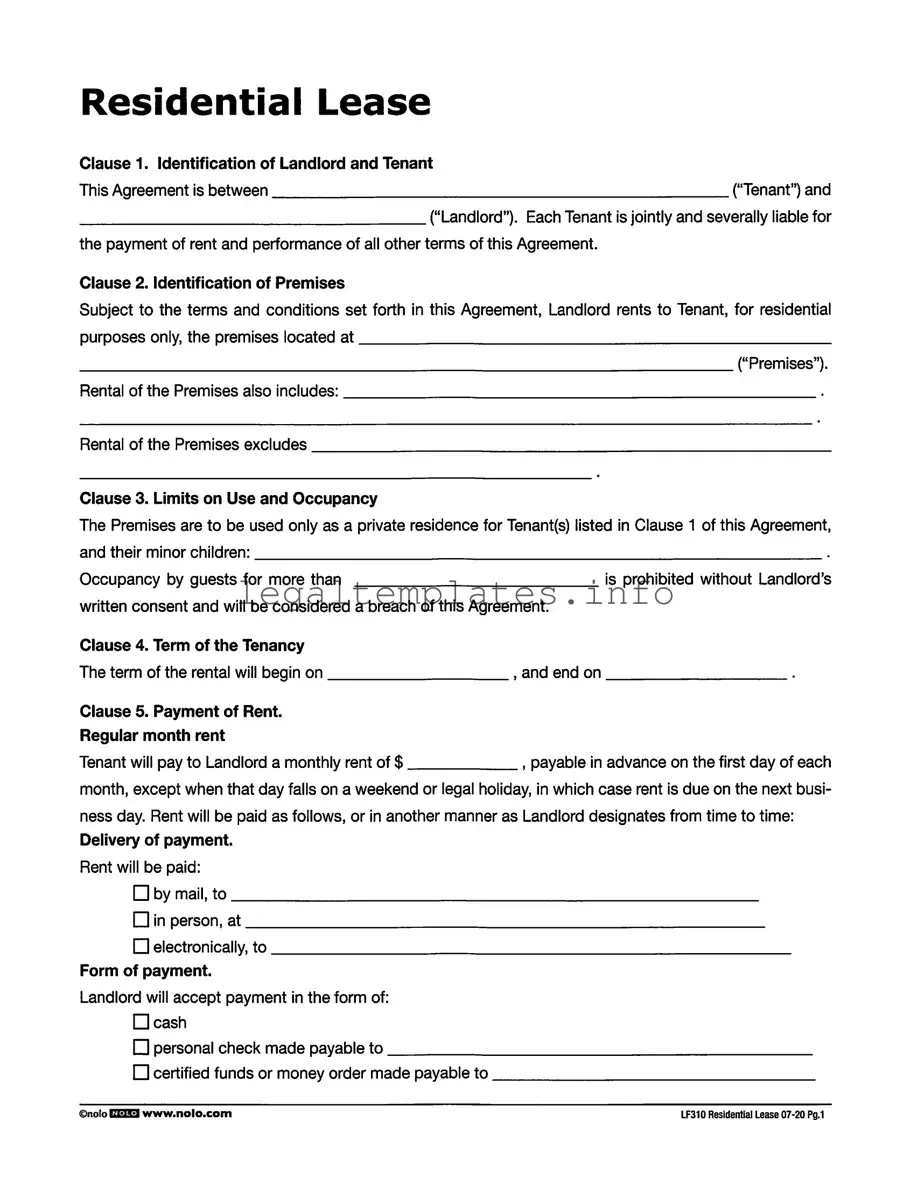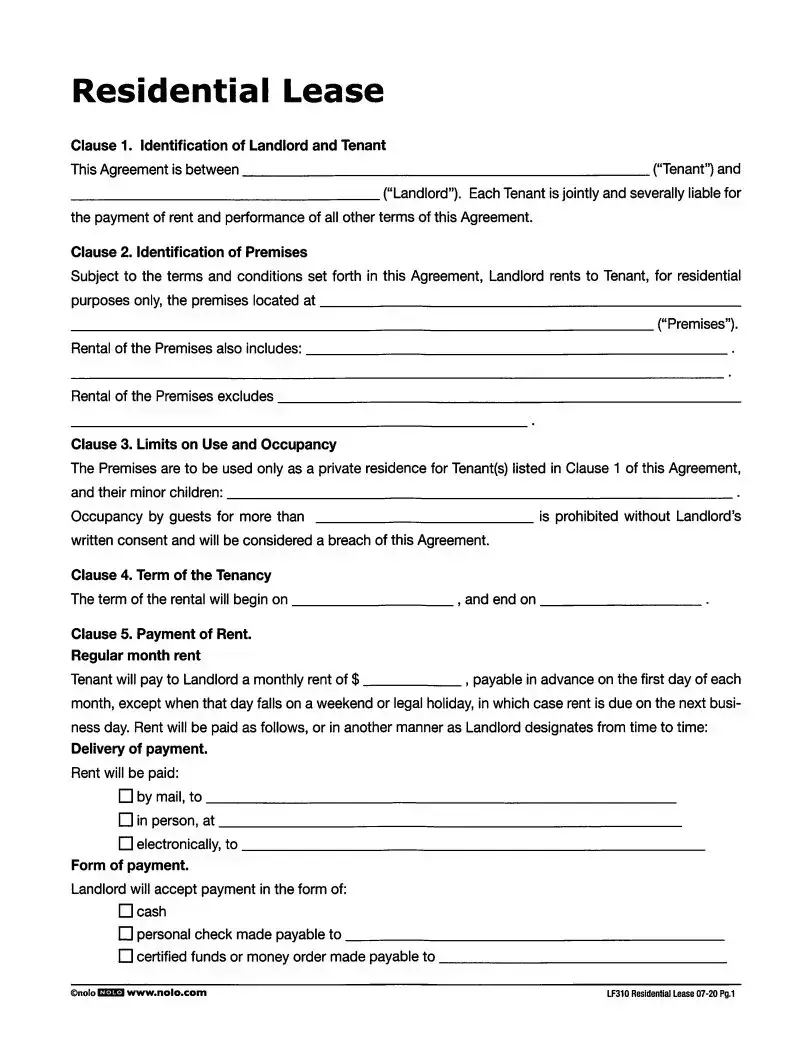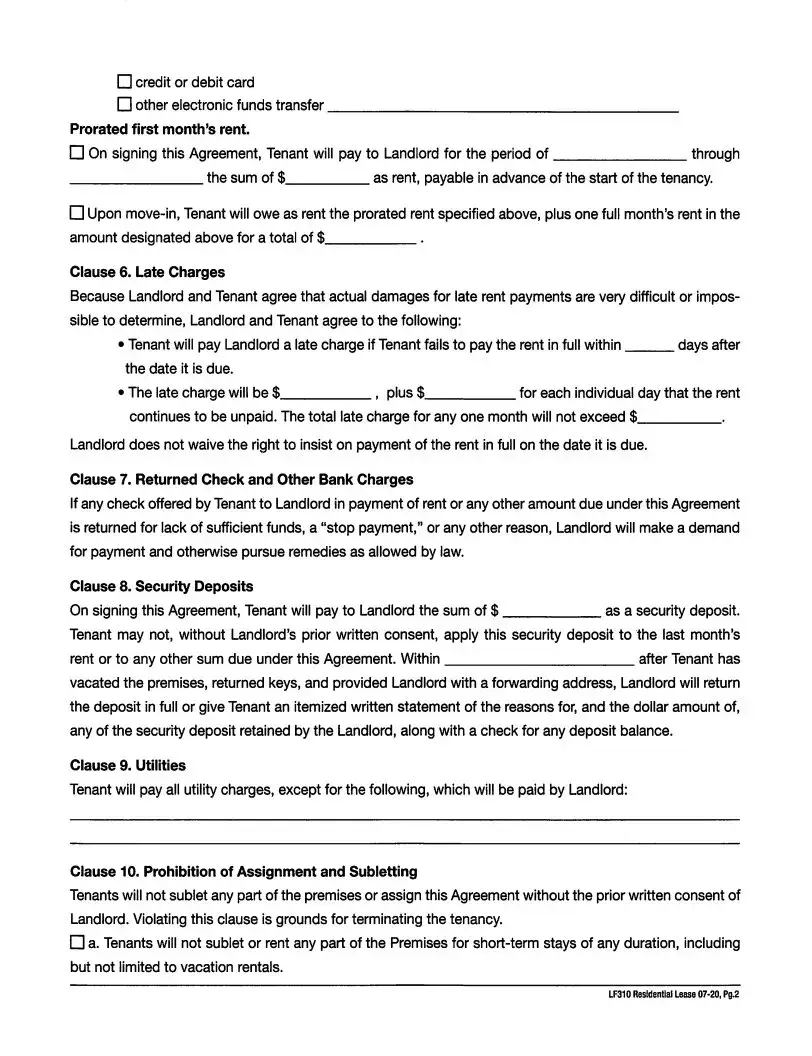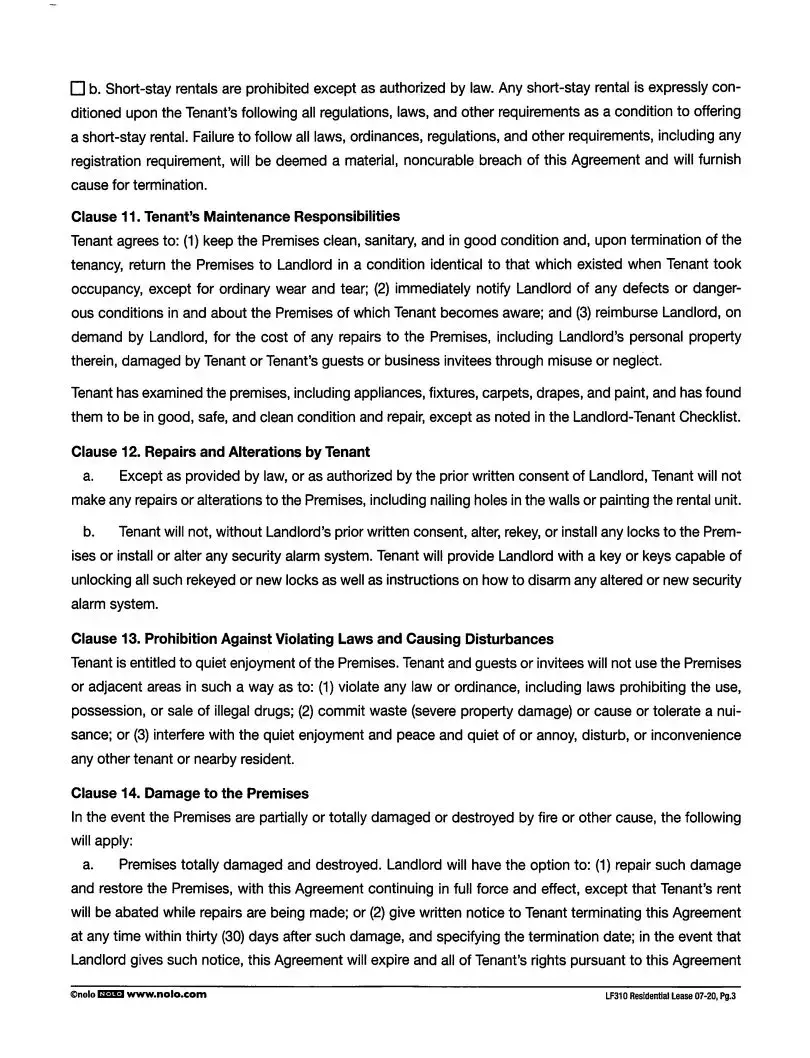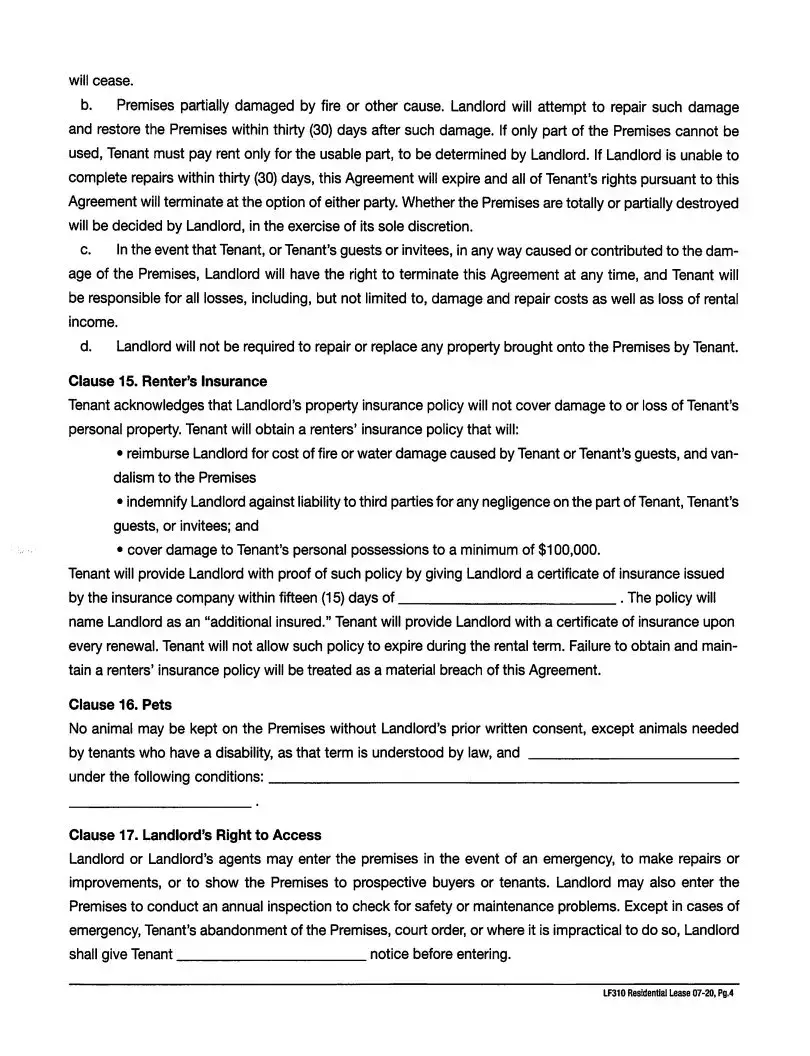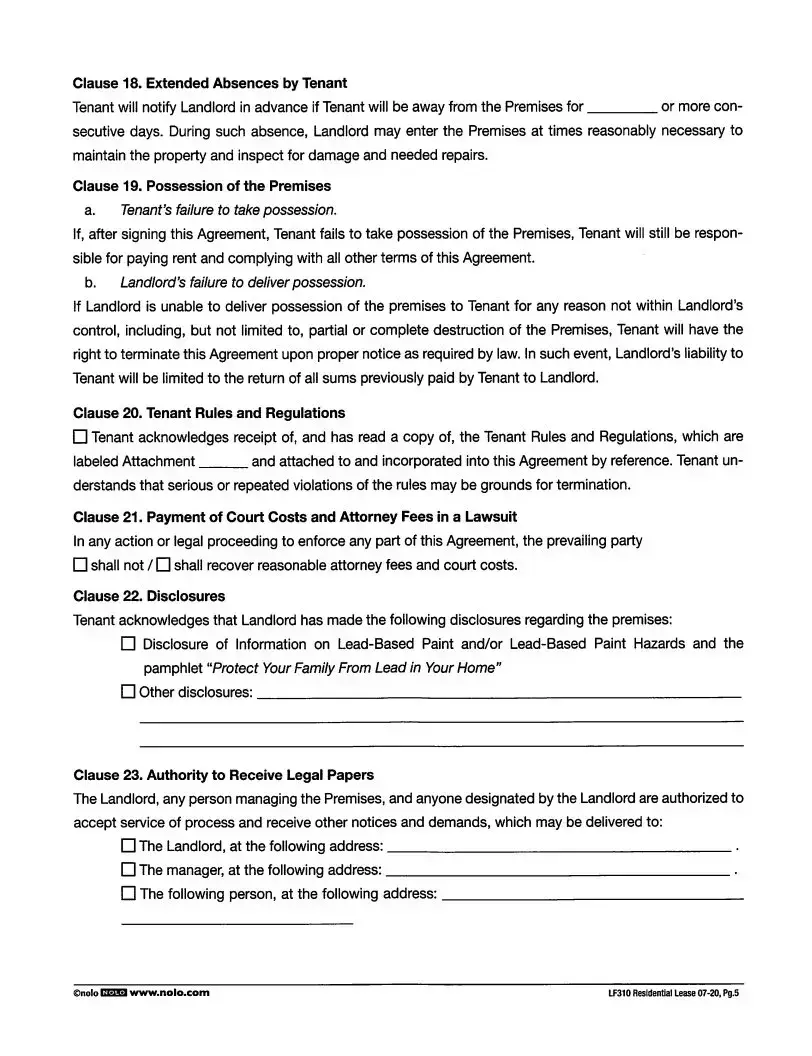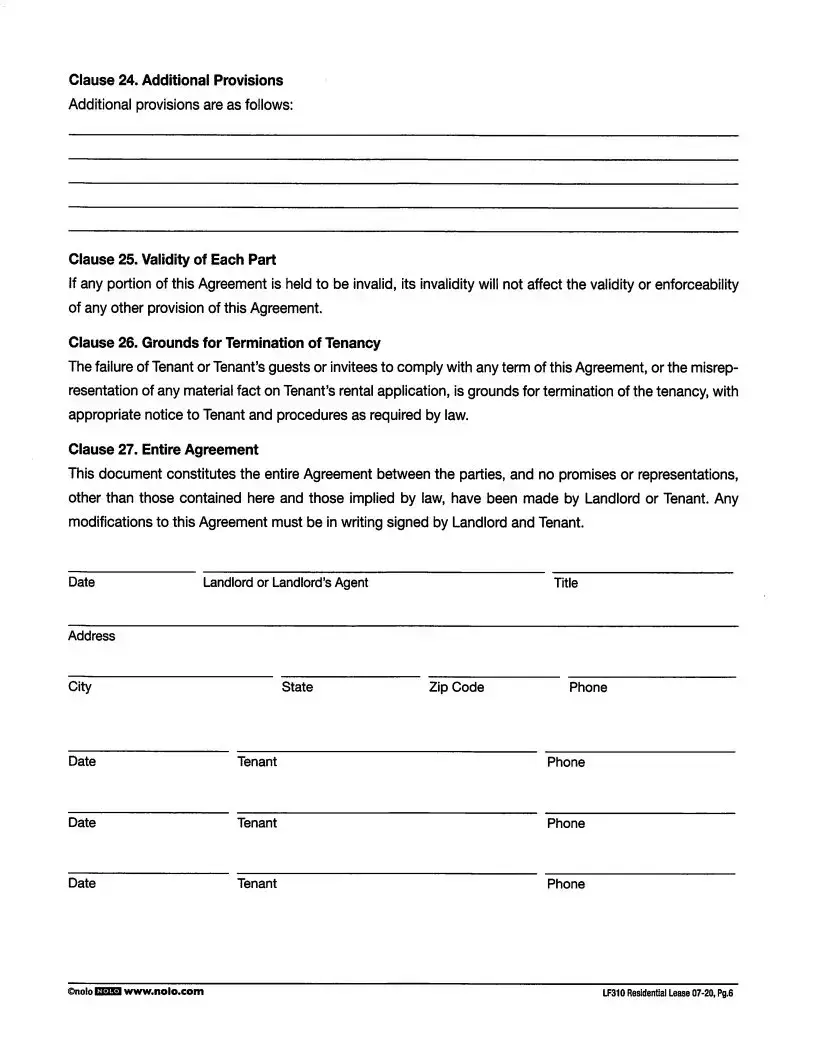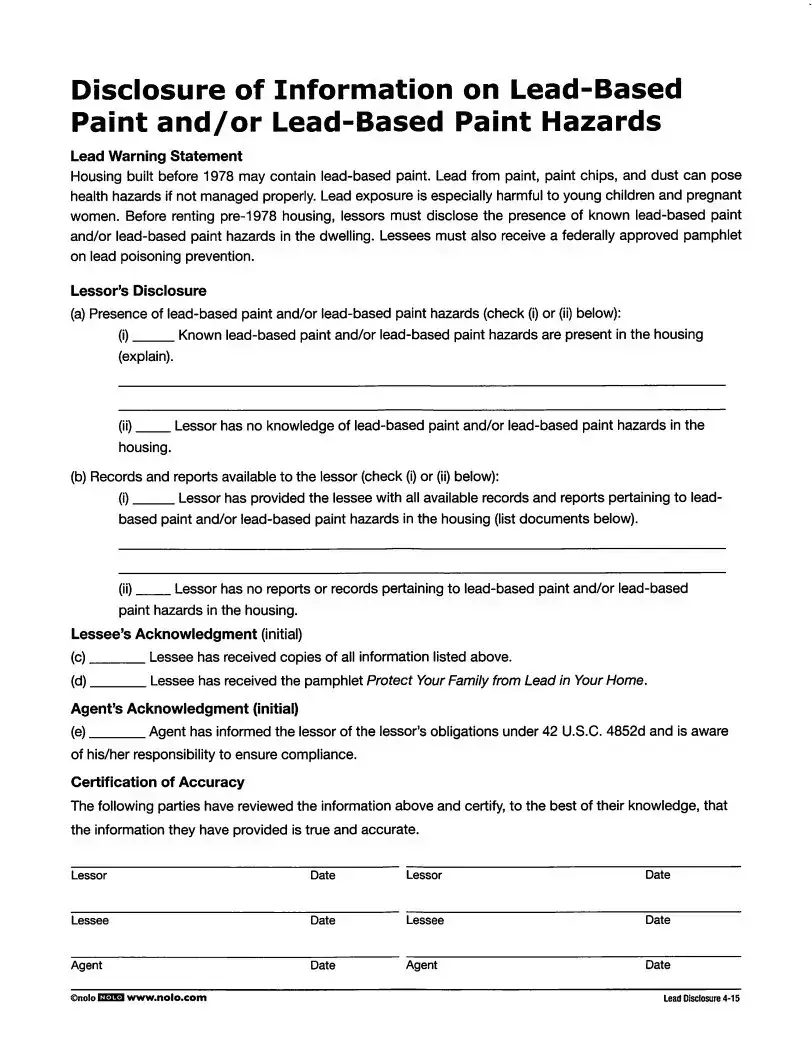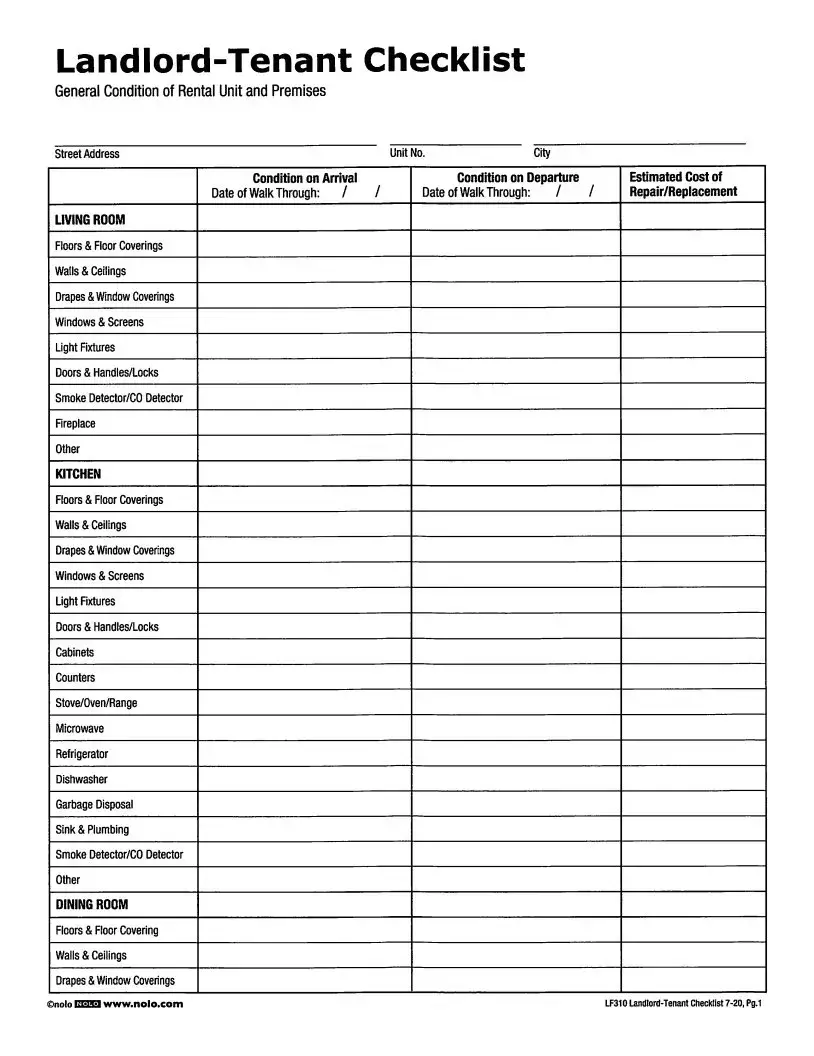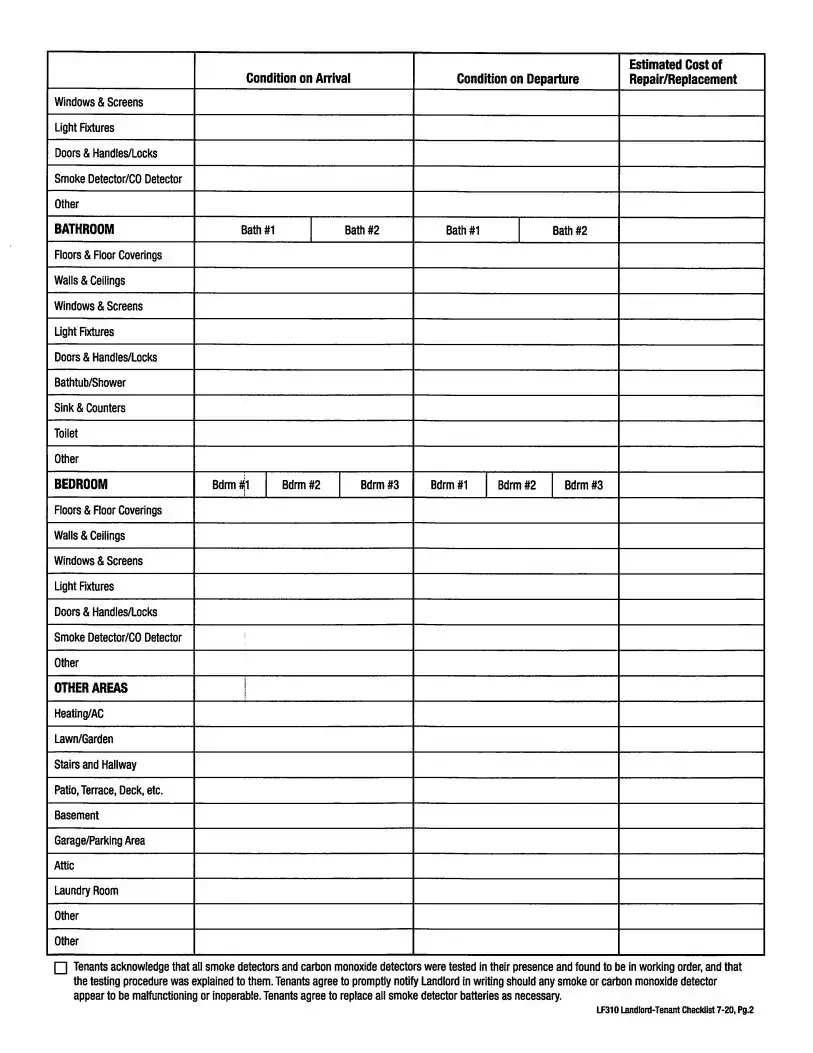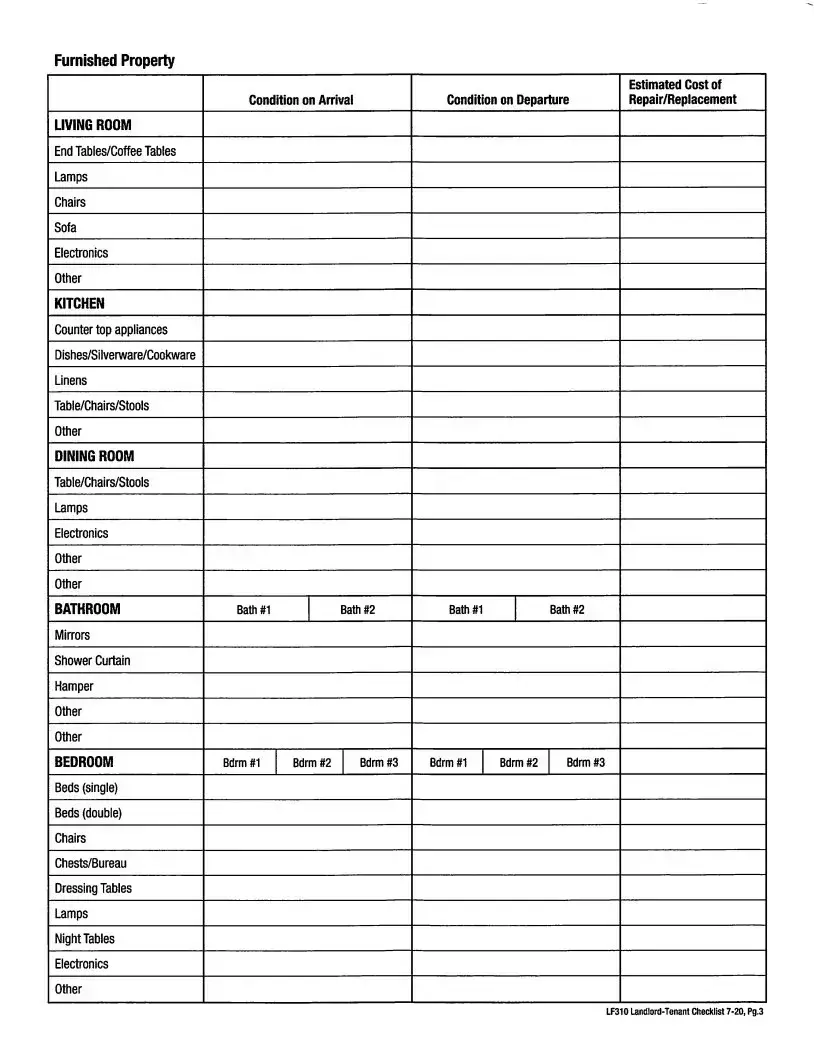What is the LF310 Residential Lease form?
The LF310 Residential Lease form is a legal document used to formalize the rental agreement between a landlord and a tenant for residential property. It outlines the terms and conditions of the tenancy, including identification of the landlord and tenant, rental property details, payment of rent, and lease duration, among other important provisions.
Who needs to sign the LF310 Residential Lease form?
Both the landlord and all tenants occupying the property need to sign the LF310 Residential Lease form. It's important that each tenant is named in the agreement since this ensures that they are jointly and separately responsible for fulfilling the terms of the lease, including the payment of rent and adherence to rental policies.
Can the security deposit be used as last month's rent?
No, the security deposit cannot be applied to the last month's rent or any other sums due under the lease without the landlord's prior written consent. The security deposit is meant to cover any damages to the property beyond normal wear and tear or other breaches of the lease terms. Upon the tenant's vacating of the premises, the landlord has a specified period to return the deposit or provide an itemized statement of deductions.
What happens if rent is paid late?
If rent is not paid on the due date specified in the lease agreement, the tenant will incur a late charge if the rent is not paid in full within a set number of days after its due date. The agreement outlines the amount of the late charge, including any daily charges for continued failure to pay. Paying rent late could lead to further legal actions and is not recommended.
Are tenants allowed to sublet the premises?
According to the LF310 Residential Lease form, tenants are prohibited from subletting any part of the premises or assigning the lease agreement to another party without the landlord's prior written consent. Violating this provision can lead to termination of the tenancy.
What is included and excluded from the rental of the premises?
The lease agreement specifies what is included and excluded in the rental of the premises. This can cover a range of amenities and responsibilities, from what utilities are included in the rent, to the use of common areas, parking, and any other facilities or restrictions. It's crucial to review these sections carefully to understand what you are entitled to under the lease and what you are obliged to avoid.
How are utilities handled?
Utility payment responsibilities are outlined in the LF310 Residential Lease form. It specifies which utilities are covered by the landlord and which are the responsibility of the tenant. Understanding your obligations concerning utility payments is important to avoid any disputes during your tenancy.
